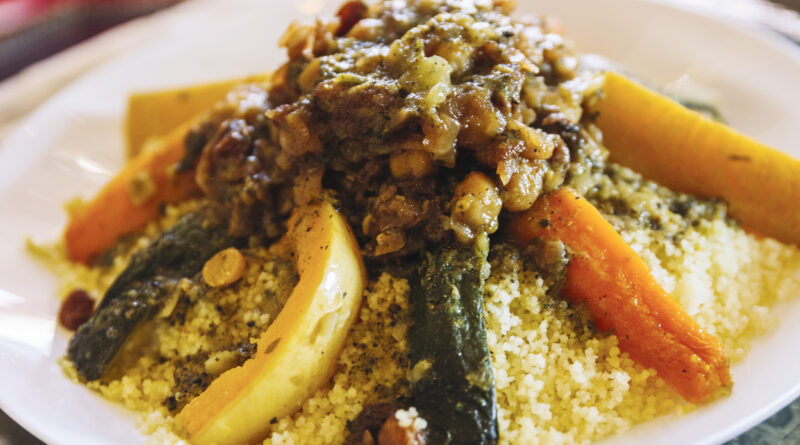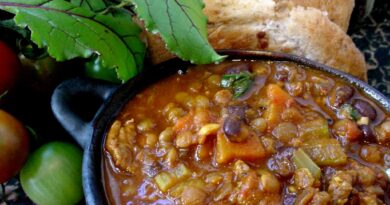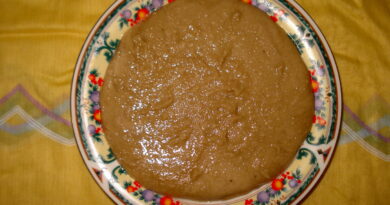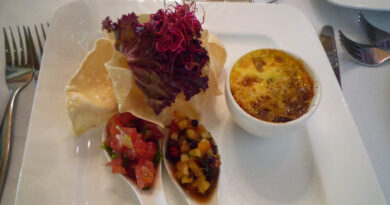Usban
Usban: Unraveling the Culinary Charms of a Middle Eastern Culinary Gem
Introduction:
Nestled within the rich tapestry of Middle Eastern cuisine lies a culinary gem that has stood the test of time – Usban. This traditional dish, celebrated for its bold flavors and cultural significance, weaves a tale that extends far beyond the boundaries of a kitchen. Join us on a flavorful journey as we delve into the origins, preparation, and cultural importance of Usban, exploring why this dish has become a beloved symbol of Middle Eastern gastronomy.
Origins of Usban: A Culinary Heritage Passed Down Through Generations
Usban’s roots can be traced back through centuries of Middle Eastern history, with its origins deeply intertwined with the nomadic lifestyle of the Bedouin people. As a staple in their diet, Usban reflects the resourcefulness and creativity born out of a necessity for preserving food in the harsh desert environment.
Bedouin Ingenuity:
The Bedouins, known for their resilience and adaptability, devised a method of cooking that not only preserved food but also transformed simple ingredients into a culinary masterpiece. Usban, a dish prepared by stuffing meat into a casing made from the intestines of animals, was a solution born out of necessity.
Ingredients and Preparation: The Artistry Behind Usban
Ingredients:
- Meat: Usban traditionally features lamb, a meat celebrated for its rich flavor and tenderness. The choice of meat is a crucial element that contributes to Usban’s distinctive taste.
- Spices: A blend of aromatic spices is at the heart of Usban’s flavor profile. Commonly used spices include cumin, coriander, cinnamon, and cloves, infusing the dish with a warm and robust taste.
- Rice: Some variations of Usban incorporate rice, adding a delightful texture and complementing the savory notes of the meat and spices.
- Animal Casings: The unique casing of Usban is crafted from the intestines of animals, traditionally sheep. This casing not only serves as a vessel for the ingredients but also plays a crucial role in the cooking process.
Preparation:
- Stuffing the Casings: The preparation of Usban involves carefully stuffing the animal casings with a mixture of seasoned meat and, in some variations, rice. This process requires skill and precision to ensure the perfect balance of flavors.
- Tying and Forming: Once the casings are filled, they are tied off and formed into distinctive shapes, often resembling sausages or links. This step is a testament to the artistry involved in crafting Usban.
- Cooking: Traditionally, Usban is slow-cooked, allowing the flavors to meld together and the casing to become tender. This slow-cooking process is a defining characteristic of the dish, contributing to its rich and savory profile.
Cultural Significance: Usban as a Culinary Symbol
Celebration of Community:
Usban holds a special place in Middle Eastern culture as a dish that brings people together. It is often prepared during festive occasions, celebrations, and communal gatherings, fostering a sense of unity and shared cultural identity.
Culinary Artistry:
The preparation of Usban is not merely a culinary process; it is a form of artistry passed down through generations. The intricate steps involved in crafting this dish showcase the culinary skills and traditions that have been preserved over centuries.
Preservation of Culinary Heritage:
Usban serves as a living testament to the resourcefulness of Middle Eastern culinary traditions. In a region with a rich history of nomadic lifestyles and diverse influences, Usban encapsulates the essence of preserving cultural heritage through the art of cooking.
Modern Interpretations: Usban in Contemporary Middle Eastern Cuisine
As Middle Eastern cuisine continues to evolve and adapt to modern tastes, Usban has found its way onto the menus of upscale restaurants and contemporary eateries. Chefs are putting innovative spins on this traditional dish, incorporating new ingredients and presentation styles while staying true to its authentic flavors.
Fusion Cuisine:
In the world of fusion cuisine, Usban has become a canvas for culinary experimentation. From unique spice blends to alternative casings, chefs are reimagining this classic dish in ways that captivate both traditionalists and those seeking a fresh gastronomic experience.
Culinary Tourism:
The rising interest in culinary tourism has brought Usban to the forefront as a must-try Middle Eastern delicacy. Travelers are eager to explore the authentic flavors of the region, and Usban, with its rich history and distinctive taste, has become a highlight of gastronomic journeys.
Conclusion: Usban – A Culinary Journey Through Time and Tradition
Usban stands as more than just a dish; it is a culinary journey through the history and traditions of the Middle East. From its humble beginnings as a practical solution for preserving food in the desert to its status as a cultural symbol, Usban embodies the essence of Middle Eastern gastronomy.
As we savor the rich flavors and appreciate the artistry behind Usban, we gain a deeper understanding of the cultural heritage that has shaped this extraordinary dish. In a world that constantly evolves, Usban remains a steadfast reminder of the importance of preserving traditions and celebrating the culinary treasures that connect us to our roots. So, whether enjoyed in the heart of the Middle East or on a plate in a modern kitchen, Usban continues to captivate palates and hearts, inviting us to savor the timeless flavors of a region steeped in history and tradition.



